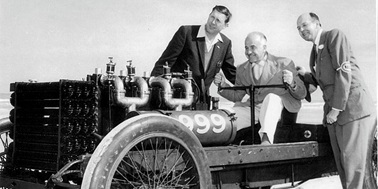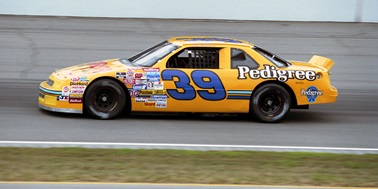Imagine if a racetrack that hosted amateur races increased the challenge of its circuit for an upcoming professional series event by making the racing groove more slippery and increasing the amount of debris off line.
Crazy, right?
Well, that kind of transformation has been underway for more than a year at Brickyard Crossing Golf Course on the grounds of the Indianapolis Motor Speedway as one of the top public courses in America was prepared for the arrival of the Indy Women in Tech Championship presented by Guggenheim Championship LPGA tournament Sept. 10-12. Some of the best female golfers in the world will face a tough, but fair challenge after its defenses have been stiffened through diligent, gradual work by the Brickyard Crossing staff.
Brickyard Crossing has been named one of America’s Top 100 public courses by Golf Digest and Golfweek, with its unique layout of four holes inside the IMS oval and 14 outside the oval backstretch. But courses are prepared and set up much tougher for LPGA and PGA tournaments, featuring the world’s elite players, than for avid weekend golfers.
The Indy Women in Tech Championship presented by Guggenheim is the first tournament for a major touring professional series at Brickyard Crossing since the Comfort Classic at the Brickyard for the PGA Champions Tour (then known as the Senior PGA Tour) in 2000.
Renowned golf course architect Pete Dye, a longtime Indianapolis-area resident, redesigned the course in 1992-93. Dye’s overhaul converted what was a flat, 27-hole layout into a challenging, undulating, 18-hole course ready for professional tournament play.
The normal layout of the course features holes 7 through 10 in the infield, with holes 1 through 6 and 11 through 18 outside of the track. But that has changed this week, with the infield holes serving as holes 15 through 18, the homestretch of every round.
Tournament and Brickyard Crossing officials decided to reroute the course for the tournament to create a more dramatic, impactful experience for players, spectators, and television viewers. The numbering of all holes will shift ahead by eight, with the usual first hole becoming tournament No. 9, the usual No. 10 becoming tournament No. 18, and so on.
Since Brickyard Crossing has a two-ended driving range, players will practice on the south end near the Pro Shop and warm up for their rounds on the north end of the range, which are adjacent to tournament holes 1 and 10.
“That is a really cool thing,” Brickyard Crossing PGA Director of Golf Jeff Williams said about the course rerouting. “We’ve embraced that. It celebrates the racetrack and the golf course. Pete Dye even said, ‘I have a lot of really good golf courses out there, but none of them have a racetrack.’ It makes for great TV shots to have the four finishing holes inside the racetrack.”
While the numbering of the course’s holes is the most obvious shift for spectators this week, the most dramatic change for the players will be the speedy pace of the greens.
A device known as a Stimpmeter measures the speed of greens on a golf course, with a higher number indicating faster greens. Brickyard Crossing’s greens usually measure around 9 on the Stimpmeter for public play, Williams said. But he indicated they will measure at 11-plus this week for the elite professionals of the LPGA Tour.
Faster greens are achieved by a combination of rolling the greens to make them more firm, cutting the greens 1/64th of an inch lower than for public play, adding sand to the turf and watering the greens slightly less than usual. That mixture of alchemy and agronomy started more than a year ago, as care must be taken to gradually introduce more speed to the greens to avoid damage to the grass.
“The greens are much more difficult when the speed is up where it is now,” Williams said. “It’s a great challenge for the average golfer. To watch it on TV is one thing: To play it is another, watching your ball roll an additional 2 or 3 feet and with these humps and bumps built in there. The greens are so much quicker, so much different.
“The greens are touchy. They’re more sensitive, closer to being on the edge, when they’re at a height lower than they’re used to for the last six, eight, 10 years.”
Pin placements also can increase the challenge of the course. Holes are placed on more severe slopes and humps on the greens for LPGA pros than for the public.
But Williams said the severity of pin placement changes by day – and by design. The pins will be in easier positions in Round 1 on Thursday and Round 2 on Friday, as a full field of 144 players must play 18 holes each.
If the pins are too tough in the opening two rounds of the 54-hole tournament, some players may be forced to finish rounds late in the day due to slower play. The field is trimmed after the second round, with players toward the bottom of the standings eliminated.
The remaining players Saturday will face an interesting mix of pin positions for the final 18-hole round.
Pins are placed in more precarious positions on many holes, increasing the difficulty for the world’s best players. But the LPGA, which sets up the course after consulting with Williams and his staff, and tournament officials also want birdie opportunities in the final holes to create drama for the fans at the course and watching on television. So the final four holes, inside the oval, may see easier pin placements Saturday.
Weather also plays a role. If the greens are dry and firm from sunshine and wind, pins may be placed in easier positions because of the rapid green speed. But the pins may be bored into tougher spots if the greens are wet and soft from rain and calm conditions, holding approach shots better and producing slower putting speeds.
“We want to see some drama,” Williams said. “It’s a formula. It’s all a big game.”
While the greens are cut lower to increase speed, the opposite occurs in the rough. That grass is fertilized more than usual and left to grow thicker and longer than for public play, penalizing LPGA pros whose shots stray from the fairways. Williams’ diligent grounds crew also mows the rough differently, causing the thick grass to stand up straighter.
“It puts a premium on hitting the ball in the fairway, which is what we want,” Williams said.
“Tournament preparation is different in every way, from how you mow the greens, from how you mow the rough, from how you mow the fairway and approaches, how you water and mow and roll the greens. We started a year-plus ago. We’re ready to peak this week.”
Brickyard Crossing Raises Defenses for Elite LPGA Players

Brickyard Crossing has been named one of America’s Top 100 public courses by Golf Digest and Golfweek, with its unique layout of four holes inside the IMS oval and 14 outside the oval backstretch. But courses are prepared and set up much tougher for LPGA and PGA tournaments, featuring the world’s elite players, than for avid weekend golfers.
Latest News
View All News
Riley Herbst Eager for First Cup Opportunity at IMS
Riley Herbst will be returning to Indianapolis Motor Speedway next week for NASCAR’s annual event, but this time he is stepping up to stock car racing’s biggest stage.

Indy 500 Winner DePaolo Laid Groundwork for Two Great NASCAR Teams
1925 Indianapolis 500 winner Peter DePaolo (photo, center) was instrumental in bringing a Ford factory team to NASCAR, which then led to the formation of the legendary Wood Brothers and Holman-Moody teams.

Close Bond with Foyt Only Solace for Ruttman after Missing Inaugural Brickyard 400
Joe Ruttman (photo), younger brother of 1952 Indianapolis 500 winner Troy Ruttman, was bumped from the starting field from the inaugural Brickyard 400 in 1994 by three-thousandths of a second by friend A.J. Foyt.
